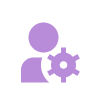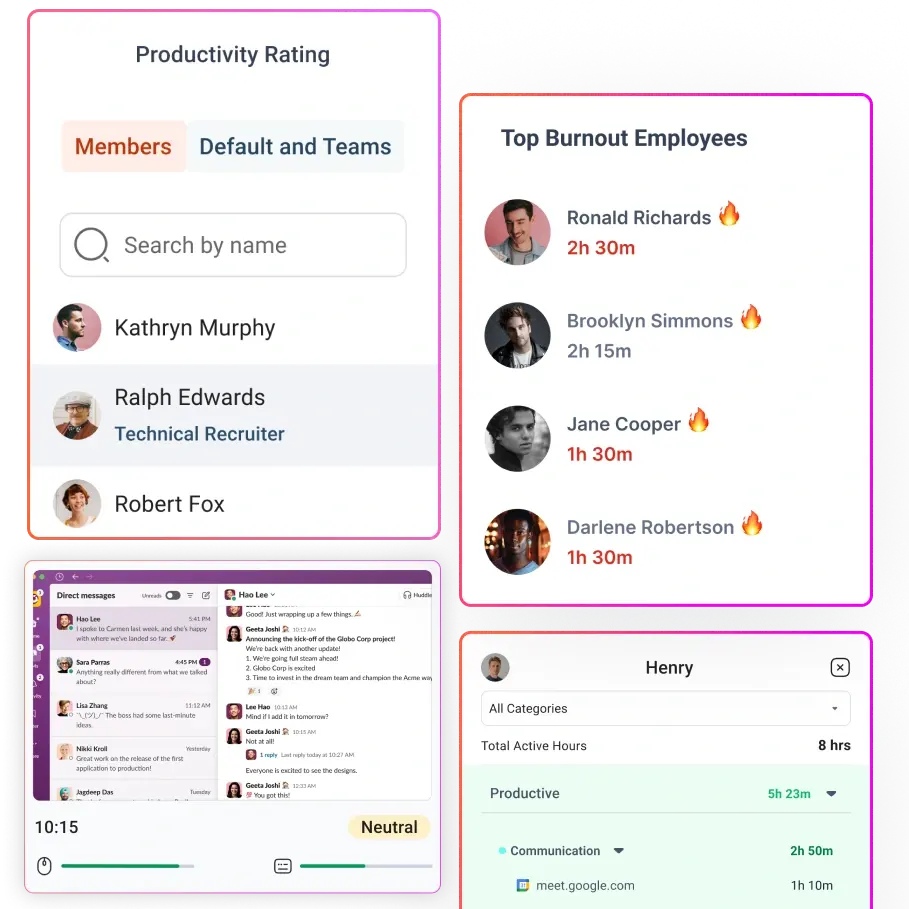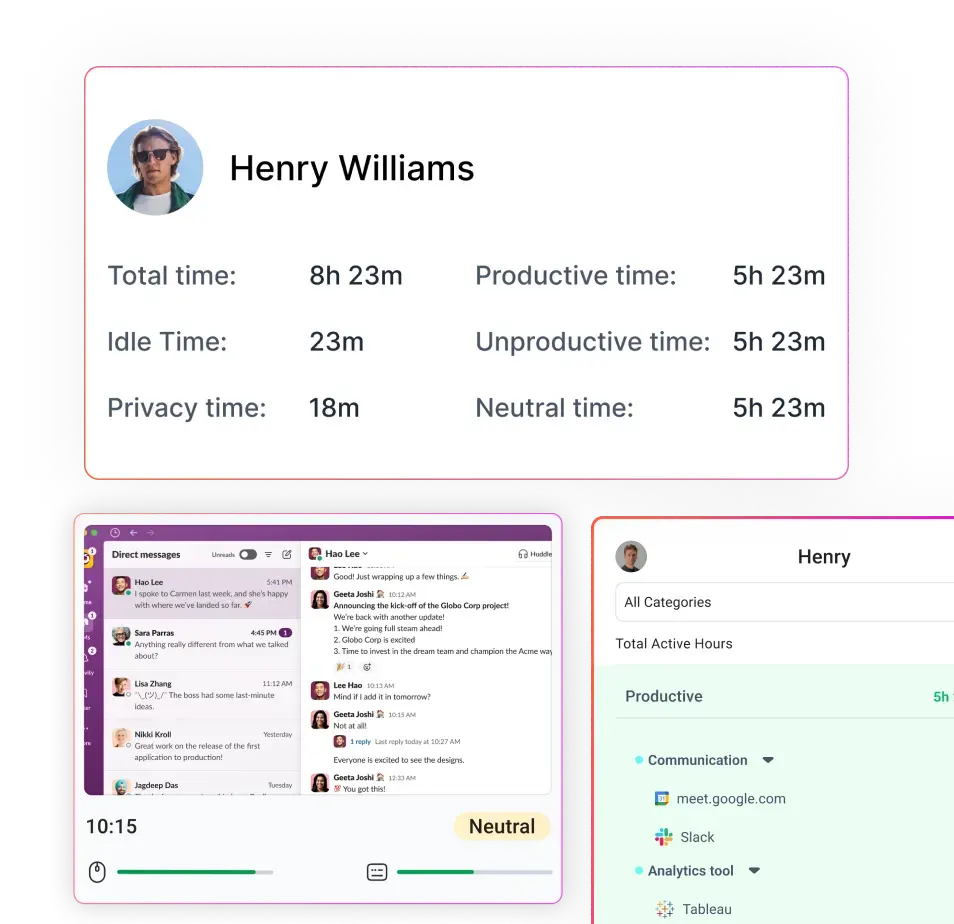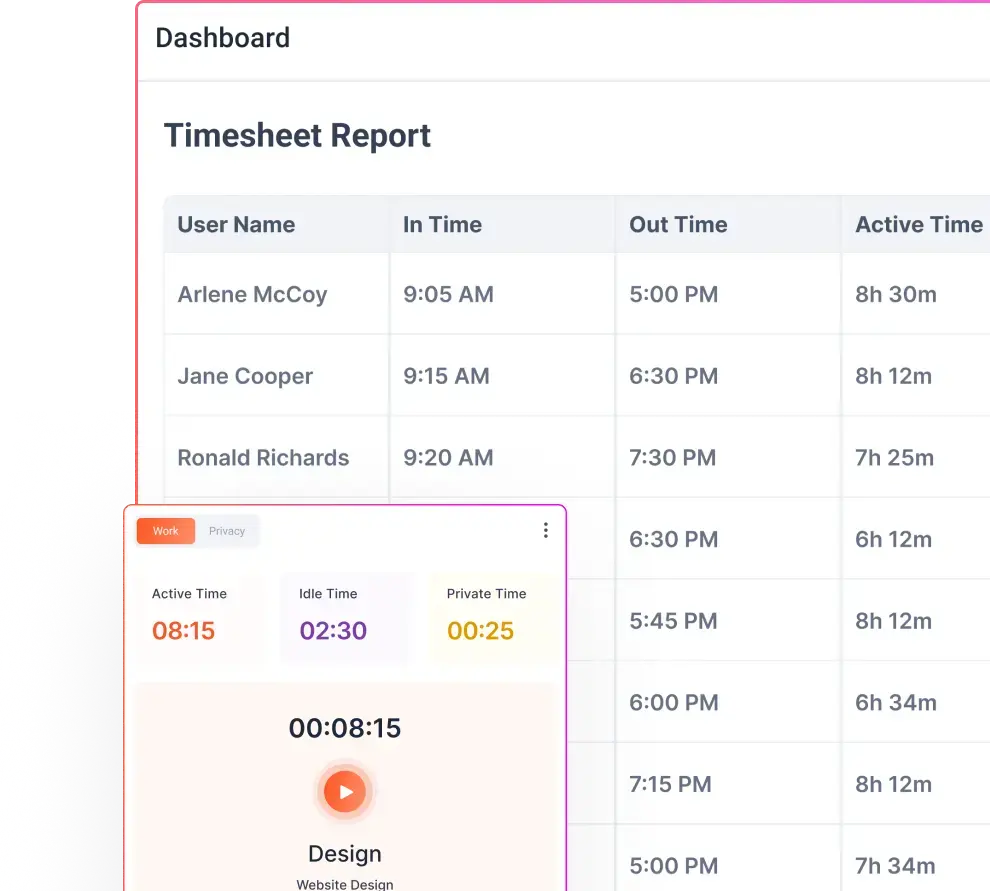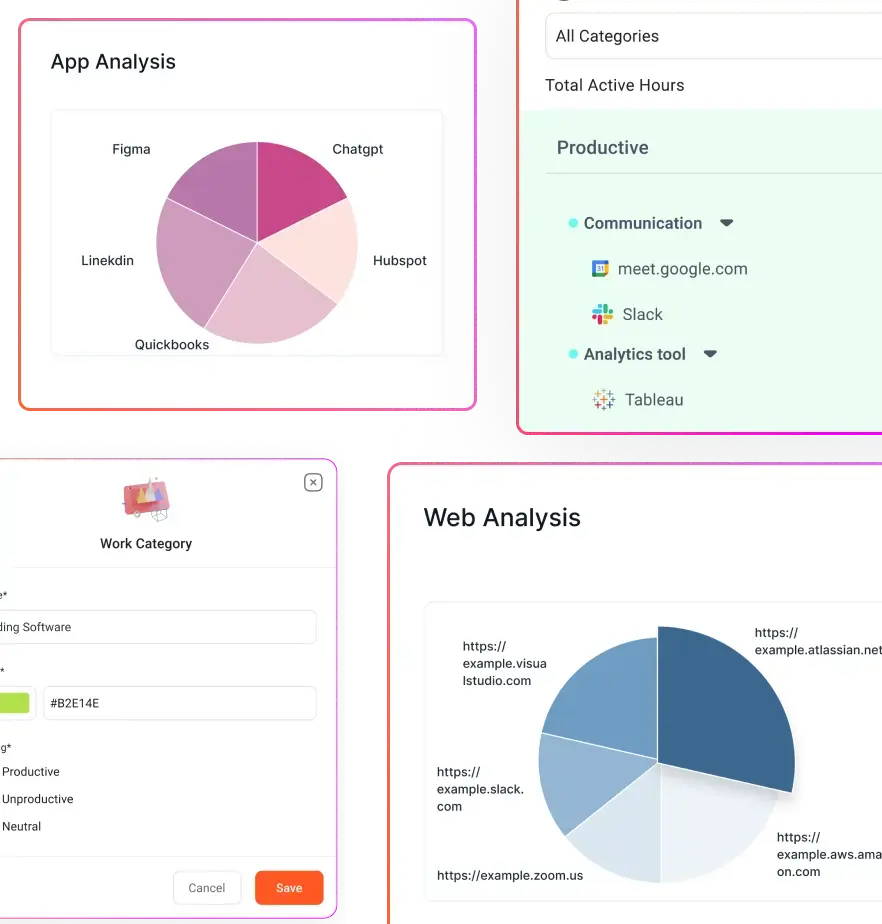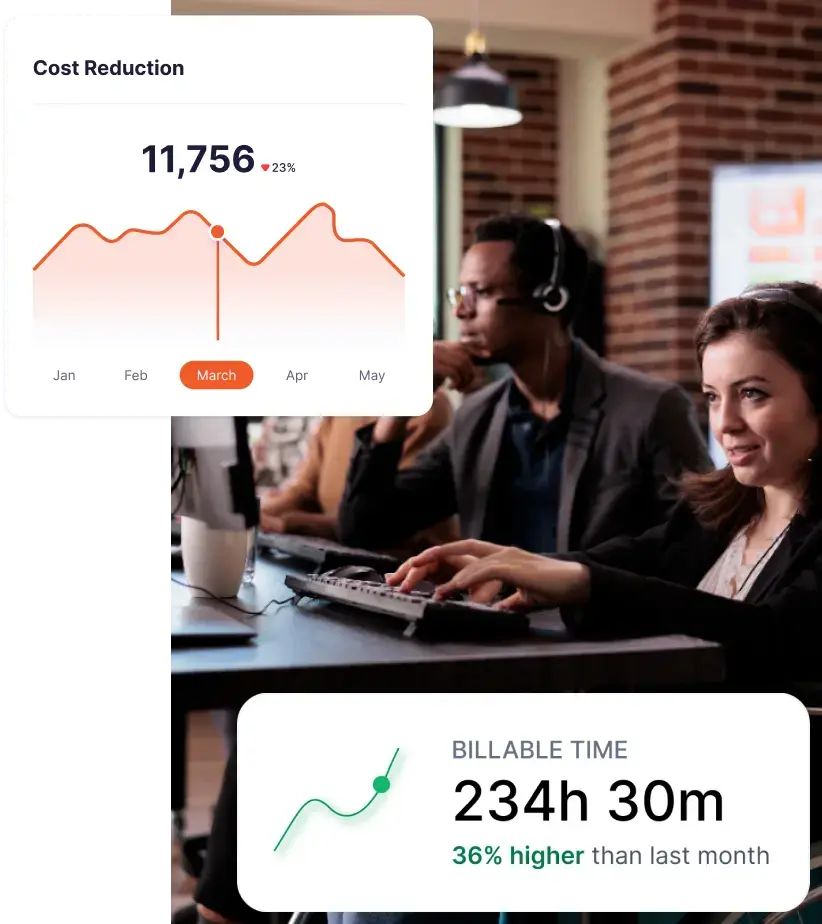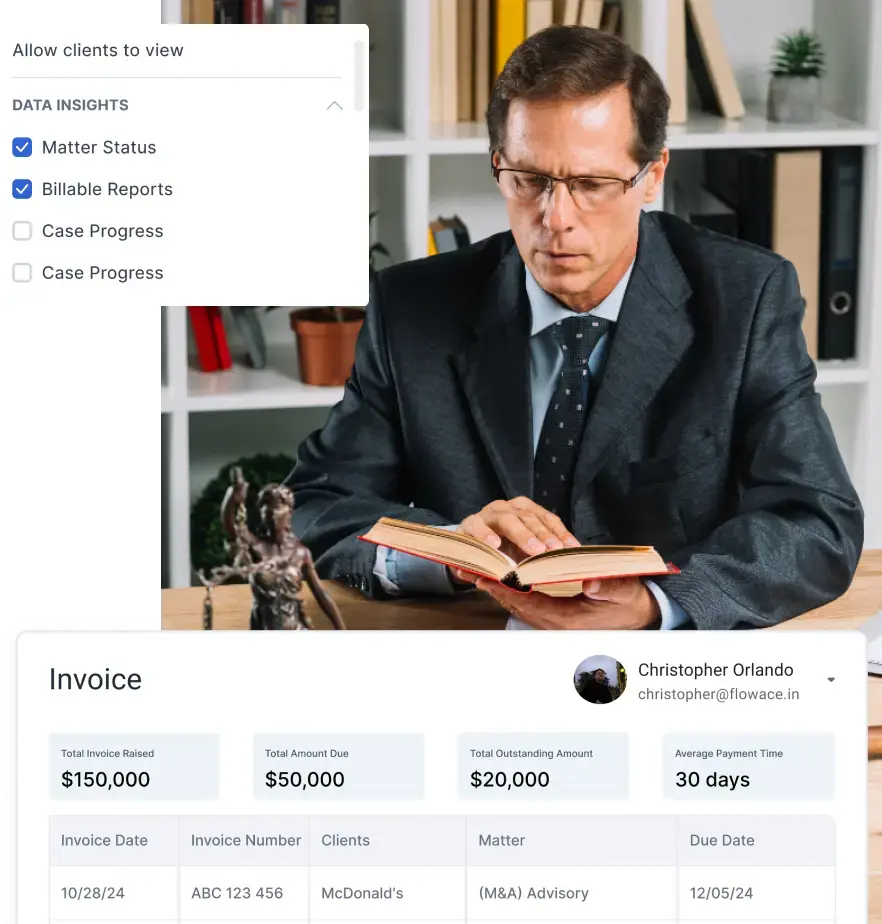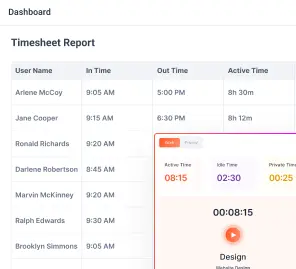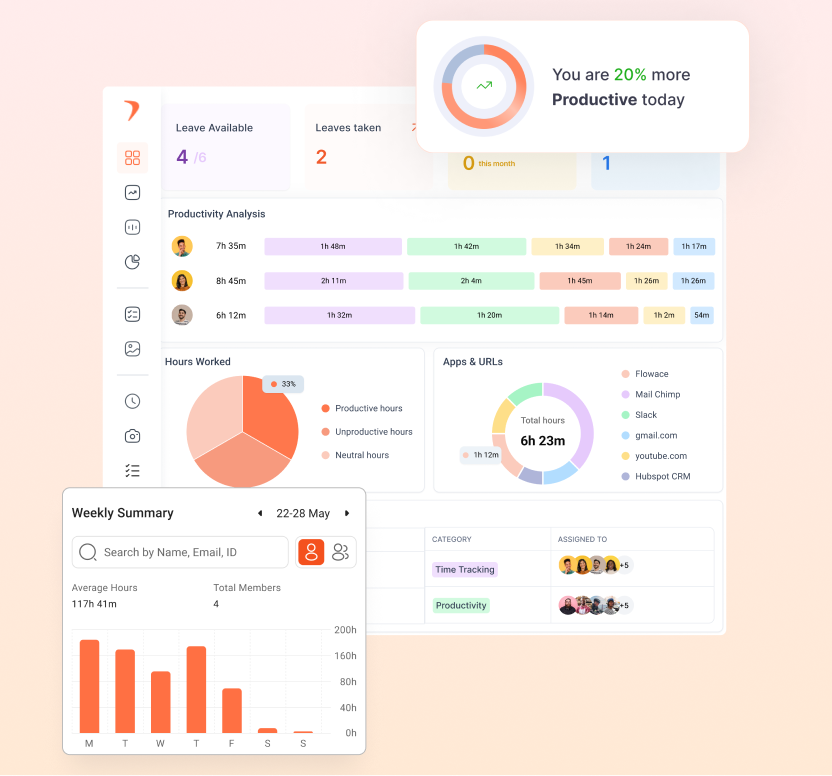Ever feel like your team’s not quite hitting its stride? Low employee productivity is a challenge that can sneak up on any organization. You might not notice it at first, but before you know it, missed deadlines and decreased quality can affect the overall morale of your business.
It’s not just a minor issue, underproductive employees cost businesses hundreds of billions of dollars each year. That’s a lot of lost potential!
But here’s the good news. Once you understand the reasons behind low productivity, you can take action to turn things around.
The Overall Impact of Low Productivity
First off, it eats away at your profit margins. The more hours your team spends on low-value or redundant tasks, the less time they spend on the work that actually moves the needle, whether that’s delivering for clients, launching new campaigns, or solving core business problems. This means higher overheads, more hours to complete the same work, and often, missed opportunities.
But the financial hit is just the beginning.
Low productivity often creates a ripple effect on team morale. When people feel like they’re constantly busy but not really achieving anything meaningful, it leads to frustration. Add to that unclear priorities, scattered communication, and back-to-back fire drills, and you’ve got a recipe for burnout.
And here’s something many leaders overlook: low productivity breeds misalignment. Teams begin working in silos, duplicate efforts pop up, and your departments stop talking to each other. Projects stall. Accountability blurs. And before you know it, decision-making becomes slower, riskier, and way more political than it needs to be.
Let’s not forget the reputational damage either. Clients and customers can smell a chaotic team a mile away. Missed deadlines, disjointed execution, or inconsistent quality all reflect poorly on your brand. And in a world where clients expect speed, transparency, and professionalism? That’s a dangerous place to be.
How does low productivity affect growth
Growth and productivity are inseparable. You can’t build a future-ready, thriving business if your current teams are barely keeping up or constantly firefighting.
You might have great people, high client demand, and even a solid reputation. But if your team takes twice the time to deliver the same output as a competitor, or is always running behind, guess what happens? Your capacity is capped. You can’t take on more clients or larger projects because your current workload already feels overwhelming.
When productivity is low, projects drag on longer, require more back-and-forth, and often demand additional resources to finish on time. Suddenly, you’re spending way more to get to the same result. That extra effort doesn’t always get billed to clients, especially if you’re project-based or on a retainer. So your profit margins start shrinking.
The Most Common Causes of Low Employee Productivity
1. Lack of Productivity
One of the biggest productivity killers is a simple lack of motivation. When employees aren’t engaged or excited about their work, the output inevitably suffers.
A 2024 State of Global Workspace Report from Gallup shows that only 23% of employees worldwide feel engaged at work, while a staggering 62% are not engaged, and 15% are actively disengaged. That means the majority of people may just be going through the motions. It’s no surprise, then, that Gallup estimates low engagement (low motivation) costs the global economy around $8.9 trillion in lost productivity, about 9% of global GDP.
A demotivated employee might procrastinate, do the bare minimum, or produce lower-quality work, a classic sign of low productivity. For example, an otherwise talented team member might start missing targets simply because they don’t feel their work is appreciated or meaningful.
It becomes a vicious cycle: as motivation drops, so does productivity, which further dampens morale.
2. Poor Management
There’s a reason people say,
“Employees don’t leave companies, they leave managers.”
If a boss is disorganized, overly critical, or micromanaging, employees become frustrated and disengaged.
A SHRM study on workplace culture found that 76% of employees say their manager sets the cultural tone, yet 36% said their manager doesn’t know how to lead a team effectively.
Bad bosses can create confusion and stress. On the flip side, good management with clear expectations, empathy, feedback, and empowerment is critical for productivity. When those elements are missing, even strong employees can underperform because they lack guidance or feel undervalued. This misalignment often results in low productivity and growing frustration.
3. Insufficient Training
You wouldn’t expect someone to be a great driver without lessons, right? The same goes for employees. If they don’t receive proper training, they’ll struggle, make mistakes, and waste time trying to figure things out on their own.
Around 40% of employees who don’t receive adequate job training will leave their positions within the first year. It is a clear sign that people value learning opportunities. Even for those who stay, lack of training is costly and frequently contributes to low productivity over time.
Insufficient training also forces experienced team members to constantly assist others, taking time away from their own tasks. All in all, failing to invest in employee development is a recipe for inefficiency.
4. Lack of Proper Role Alignment
Productivity plummets when people are in the wrong roles or their responsibilities don’t align with their strengths. Such mismatches lead to boredom, disengagement, and underperformance. Gallup research indicates that teams that focus on employees’ strengths every day have 12.5% greater productivity on average.
Think of a scenario where a tech-savvy employee is stuck doing manual paperwork, or a people-person is isolated in back-office tasks. They’ll likely be slower, less accurate, and less enthusiastic than someone whose skills truly fit the role. This will lead to to low productivity and poor performance outcomes.
Lack of proper role alignment can also cause certain tasks to fall through the cracks – if “it’s no one’s job,” it often doesn’t get done efficiently. In short, when talents and roles are misaligned, employees may struggle through the day rather than excel.
5. Unbalanced Workloads
If some team members are overloaded while others have too little to do, both groups’ productivity can suffer. Overworked employees often experience burnout, which leads to fatigue, errors, and eventually disengagement. On the other hand, underworked employees can become bored and unmotivated, since they don’t feel challenged or valued. Neither extreme provides you with a good output.
On the flip side, if an employee has too light a workload, they might stretch tasks out to fill time or lose their sense of urgency and focus. They might even develop “rust” in their skills. Unbalanced workloads can also breed resentment within a team and drag down everyone’s productivity. In both overwork and underwork scenarios, low productivity is a common and costly consequence.
6. Personal Issues
We like to say “leave your personal life at the door,” but the reality is that employees are human. An employee who is dealing with a sick family member or going through a bout of depression may be physically present but mentally elsewhere. They might have difficulty concentrating, take more sick days, or work at a slower pace.
The impact of mental health on productivity is profound. These issues often manifest as absenteeism (missing work) or “presenteeism” (at work but not fully functioning).
Personal stress can also lead to on-the-job accidents or mistakes. Moreover, if the workplace isn’t supportive, employees may try to silently cope and perform, which can backfire.
7. Too Many Tasks at Hand
Sometimes the issue isn’t a single big problem but simply an overload of problems. When employees are multitasking, their productivity can grind to a halt. It might sound counterintuitive, but trying to do everything at once often means nothing gets done efficiently.
Multitasking or rapid context switching between tasks can greatly decrease your productivity. This is because every time you switch tasks, your brain incurs a “reset” cost. One famous study from the University of California Irvine found it takes about 23 minutes on average to regain focus after a single interruption.
Additionally, when people feel overwhelmed by too many tasks, they can become stressed and freeze up, further slowing progress. In an environment of constant busyness, employees may wear “many hats” but struggle to excel in any one area, multitasking not only reduces focus but also leads to low productivity across the board.
8. Inadequate Tools and Technology
You can’t build a house with broken tools, yet that’s often what employees are expected to do. When organizations don’t invest in the right hardware, software, or platforms, even basic tasks can become needlessly time-consuming. Slow systems, glitchy applications, or tools that don’t integrate properly force employees to create workarounds.
Over time, this doesn’t just waste time, it kills motivation. Even worse, these tech limitations can lead to errors that affect quality and client satisfaction. It’s a leadership-level issue, not an employee shortfall. Having a proper time tracking software can help you discern where your employees are stuck and what assistance they need.
9. Poor Internal Communication
Miscommunication isn’t always about one person not listening—it’s often about structural flaws in how a company shares information. When priorities change but aren’t communicated clearly, employees are left guessing. If teams don’t know who’s doing what, duplication or dropped responsibilities become inevitable. The result? Frustration, inefficiency, and even conflict. This isn’t a reflection of individual productivity—it’s the consequence of a lack of clarity from the top down.
10. Toxic Work Environment
Toxicity spreads quietly but quickly through unchecked bullying, microaggressions, favoritism, or gossip. A single toxic manager or cliquish team culture can shut down creativity and risk-taking. Employees who feel targeted or unsupported will operate in survival mode, not growth mode. They’ll do the bare minimum to protect themselves from further stress. Importantly, no individual can “fix” toxicity alone; it requires leadership intervention and cultural repair.
11. Frequent Organizational Changes
When companies constantly restructure, rebrand, or pivot, employees live in limbo. Roles blur. Decision-making slows. Projects pause midway through execution. In environments where employees don’t know what to expect tomorrow, today’s work loses meaning. Chronic change fatigue sets in, leaving teams disengaged. Employees can’t be agile if they’re constantly destabilized by top-down uncertainty.
12. Lack of Recognition and Reward
When effort doesn’t lead to acknowledgment, over time, effort stops. Employees who meet (or exceed) expectations without receiving thanks, feedback, or incentives begin to feel invisible. This erodes engagement. Why give 100% if 60% gets the same response? Recognition doesn’t always mean big bonuses; even regular verbal appreciation, awards, or growth opportunities go a long way. Failing to embed recognition into company culture is a leadership oversight, not a productivity flaw in the team. A good productivity software can help you show who’s utilized to what extent, who’s going above and beyond, and whom to recognize instantly.
Strategies to Boost Employee Productivity
Understanding the causes of low productivity is half the battle. The other half is taking action. Here are some strategies that will help you handle the above issues.
Re-energize Your Team
Re-energizing your team’s motivation is key to turning productivity around. Start by fostering a positive, supportive environment where employees feel valued. Companies with formal recognition programs report 14% higher productivity and engagement than those without.
Beyond recognition, ensure employees see the purpose in their work. Explain how their tasks contribute to the bigger picture or mission of the company. Setting clear goals and showing employees their progress can also motivate them. It’s inherently satisfying to see how one’s work moves the needle.
Improve Management Practices
Better management can remove huge roadblocks to productivity. Leaders and supervisors should focus on becoming enablers rather than micromanagers. This starts with communication. Clearly outline expectations and priorities so employees aren’t left guessing. Provide regular feedback, both praise and constructive guidance. This helps people understand how they’re doing and how to improve. It’s also important for managers to be accessible. An open-door policy (or in remote settings, an open Slack/Teams policy) encourages team members to ask questions and raise concerns early.
Training managers in soft skills like communication, conflict resolution, and coaching also pays dividends. For instance, if a team’s output is suffering due to poor planning, a manager trained in project management techniques can turn it around by setting better timelines and checkpoints.
Equally, managers should avoid these common pitfalls: don’t overload your team with needless meetings, don’t micromanage every detail, and don’t shy away from tough conversations when someone is underperforming.
Provide Adequate Employee Training
To combat skill gaps, make training and development a continuous process. Start with thorough onboarding for new hires, so they learn not just what to do but how to do it efficiently.
When employees learn new skills or sharpen existing ones, they work faster and make fewer errors. Training can range from technical upskilling (e.g., teaching a team to use a new software that automates a task) to soft skills (e.g., time management, effective communication). Both types have productivity benefits.
Also, encourage a knowledge-sharing culture. Senior staff can host brief knowledge sessions to bring juniors up to speed. Team members can share tips or hacks they’ve discovered to work smarter. If formal training budgets are tight, consider free webinars, industry conferences, or even simple in-house reading groups to discuss new ideas.
Importantly, don’t forget to solicit feedback. Ask employees what areas they feel they need more training in, or what tools confuse them. They’ll appreciate the chance to voice their needs, and you gain insight into where coaching can have the most impact.
Match Skill Sets to Responsibilities
To fix role alignment issues, take a step back and assess each team member’s strengths and weaknesses. Then adjust roles or task assignments accordingly. Sometimes, small tweaks can make a big difference.
For example, if you discover that one of your customer service reps has a knack for writing, you might have them focus more on email support (where their written communication shines) while another rep who is a people-person handles more phone calls.
People are happier and output more when their work aligns with what they’re good at and enjoy. So, ask them how they feel about their workload and where they think they could contribute most. Their insights might surprise you.
Support Work-Life Balance
When people are well-rested, healthy, and happy, they bring their best selves to work. Companies can promote work-life balance in many ways. A straightforward step is offering flexible schedules or remote work options when possible.
Encourage employees to take their paid time off (PTO). A refreshed employee often returns with more energy and new perspectives.
You should also model balance from the top. If managers routinely send emails at midnight or never take a vacation, employees will feel pressured to do the same, which over time drains productivity.
How to Address Workplace Distractions and Inefficiencies
Even with motivated people and great policies, everyday distractions and inefficient practices can sap productivity. Recognizing and addressing these can eliminate hours of wasted time and boost your team’s focus.
Multitasking and Its Drawbacks
Modern workplaces often idolize the “multi-tasker” – someone who can handle emails, chats, project work, and phone calls all at once. But the reality is that multitasking is usually counterproductive. Our brains aren’t wired to do two complex things simultaneously.
By reducing multitasking and interruptions, you’ll likely see work get completed faster and with higher quality.
The Impact of Excessive Meetings
Meetings, meetings, meetings – they can be the bane of a productive workday. While collaboration and communication are important, too many meetings can wreck schedules. An employee with back-to-back meetings has little time left to do actual project work, often forcing them to work early mornings or late nights to catch up.
Astonishingly, research indicates that over 70% of meetings are considered ineffective or unproductive. So, keep meetings short and on-topic – try 15- or 30-minute stand-ups instead of defaulting to an hour.
Also, consider implementing “meeting-free” days or afternoons, giving everyone a solid block of uninterrupted work time.
Workplace Stress & Toxic Behaviors
Workplace stress can come from many sources – high pressure to meet targets, fear of job loss, interpersonal conflicts, or even an overly competitive culture. High stress levels trigger the body’s fight-or-flight response, which is not conducive to thoughtful, creative work. In fact, chronic workplace stress has been linked to everything from increased errors and accidents to higher absenteeism.
To address stress and toxicity, leadership must actively cultivate a healthy work environment. That means implementing policies against harassment and enforcing them, training managers to lead with emotional intelligence, and providing support resources (like counseling or conflict mediation) when issues arise.
The Overall Impact of Low Productivity on Business Growth
Let’s break down how a persistently unproductive workforce impacts two key areas: employee morale/engagement and the company’s financial performance.
Effects on Morale and Employee Engagement
Productivity and morale have a two-way relationship: low morale can lead to low productivity, and consistently low productivity can further erode morale. When a team is struggling to meet goals or constantly falling behind, it creates a gloomy atmosphere.
This results in a workforce that is “checked out,” doing the minimum. This manifests in behaviors like increased lateness, more sick leaves, lack of participation in meetings, and a decline in initiative and innovation.
Financial and Operational Repercussions
When productivity drops, the financial consequences for a business can be severe. Simply put, you’re paying for labor hours that aren’t yielding the expected results. If each employee is producing, say, 20% less than what they could be, that directly translates to higher costs per unit of output or service. Cumulatively, this is enormous.
If a competitor is more efficient, they can outpace you, capturing market share while your team is still scrambling to finish deliverables.
There’s also the cost of overtime and overstaffing: a task that should require one person might need two or more if productivity is low, or might incite expensive overtime pay to meet deadlines.
Tools & Solutions to Overcome Low Productivity
Tackling low productivity isn’t just about human effort. The right tools and technology can make a huge difference. Here we’ll highlight a few categories of tools and solutions and how they help:
Productivity Management Software
One powerful way to improve productivity is to use productivity management or employee time-tracking software. These tools give both employees and managers visibility into how time is spent and where bottlenecks occur.
A great case in point is Flowace, a leading company specializing in improving workplace productivity and time tracking solutions. Flowace’s software uses advanced AI algorithms to automatically track and analyze work hours. So, your employees don’t have to punch clocks or start/stop timers. This “hands-free” approach eliminates human error in time tracking and can even detect idle periods versus active work.
Managers get real-time dashboards showing team and individual productivity, project time allocation, and even work-life balance metrics like overtime hours.
By identifying unproductive habits and shining a light on them, the software motivates teams to improve.
The Role of AI and Automation
Artificial Intelligence and automation are game-changers when it comes to eliminating repetitive work and reducing human error. By letting machines handle the drudgery, employees can focus on higher-value tasks, thereby boosting overall productivity.
Consider the everyday tasks that eat up time such as data entry, scheduling meetings, generating routine reports, sorting emails, processing forms, etc. Many of these can be automated with the right tools.
For instance, AI chatbots can handle common customer service queries. Robotic process automation (RPA) can move data between systems far faster than a person. Algorithms can quickly analyze data sets that would take humans days to crunch.
Leveraging AI and automation can significantly cut down the “busy work” and free human capacity for the more strategic, creative tasks that drive a business forward.
The Use of Collaborative Tools
Smooth collaboration and communication are essential for productivity, especially with the rise of remote and distributed teams. That’s where modern collaborative tools like Slack, Microsoft Teams, Trello, and Asana help.
Instead of long email threads or waiting for the next meeting, team members can get answers in real-time via Slack. This immediacy can prevent bottlenecks.
For e.g., a developer stuck on a bug can ping a teammate and get a solution in minutes, versus being stuck until an email reply comes hours later.
Collaborative tools also reduce the need for some meetings and emails. These tools can keep a record of discussions and files, so knowledge is centralized and not lost in individual inboxes. Team members who miss a discussion can catch up by reading the channel history, which is far more efficient than tracking people down for updates.
How Flowace Can Help Monitor and Enhance your Team Productivity
Having discussed a range of solutions, now it’s time to zoom in on Flowace. Flowace is an all-in-one productivity management software suite that combines time tracking, employee monitoring, project management, and analytics. It’s designed to give you a 360° view of productivity and help both employees and managers optimize their work.
So, how exactly can Flowace help?
- Firstly, Flowace provides hands-free, automatic time tracking. This means employees don’t have to remember to clock in or toggle timers for different tasks – the app intelligently logs active work time on their devices.
- Flowace employee monitoring software also features silent monitoring and automatic attendance. “Silent” or stealth monitoring means it runs in the background without interrupting the user, but it can take periodic screenshots (if enabled) and log activity to ensure accountability. This is done ethically, emphasizing privacy and ethical monitoring.
- One nifty feature is productivity ratings and inactivity alerts (in the Standard plan, which can nudge employees if they’ve been inactive for a long stretch or reward them when they maintain high productive time.
- Flowace also contributes to improving work-life balance metrics. Uniquely, it can measure things like how long people work without breaks and total hours vs. productive hours. This can highlight if employees are overworking inefficiently. Management can then encourage those people to take breaks or sign off at a reasonable hour.
- Flowace’s special features, like SIM/WhatsApp call tracking (as an add-on) and GPS tracking for field teams, extend its utility beyond the computer screen. Sales teams or support teams who spend time on calls or traveling can have those activities auto-logged into their productivity metrics.
Flowace’s impact isn’t just theoretical – real companies have seen results. For example, Gravitas Legal (a law firm) implemented Flowace and managed to save 37 minutes per day per employee by using automated timesheets and activity tracking.
To sum it up, Flowace is built to serve any organization concerned with productivity, from startups to large enterprises.
Final Thoughts
Low employee productivity can feel like a stubborn cloud hanging over a team. But as we’ve explored, it’s a challenge that can be overcome. The key is to diagnose the root causes.
By following the guidance above, you’ll create a workplace where productivity hurdles are quickly recognized and cleared.
And then apply the right solutions, from people-focused strategies to tech tools like Flowace. The transformation won’t happen overnight, but with consistent effort and a willingness to adapt, you can turn a sluggish workplace into an efficient and engaging one.
FAQs
- What is low productivity?
Low productivity means employees are not working efficiently, leading to wasted time, missed deadlines, and lower output. It can stem from disengagement, poor management, or inefficient workflows.
- What is the root cause of low productivity?
Low productivity often comes from a mix of factors—lack of motivation, unclear goals, poor role alignment, or even too many workplace distractions. Identifying these causes is the first step to fixing them.
- How to overcome low productivity?
You can boost productivity by setting clear goals, improving team communication, and using smart tools like Flowace to automate time tracking and optimize workflows. With the right strategies, you can turn wasted hours into productive results.
- What does lack of productivity look like?
It often looks like employees struggling to focus, missing deadlines, or constantly feeling overwhelmed. Flowace helps businesses track productivity trends in real time, so you can spot inefficiencies and fix them before they affect performance.























